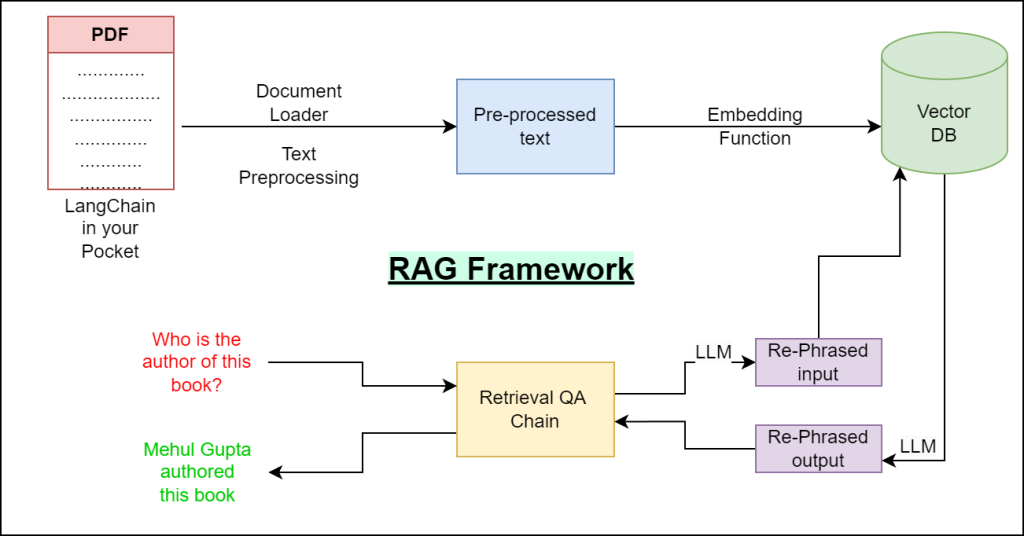Understanding Retrieval-Augmented Generation (RAG): A Simple Guide
In the rapidly evolving world of artificial intelligence, many techniques are being developed to make machines smarter and more useful. One such technique is Retrieval-Augmented Generation (RAG). While the name might sound a bit technical, the concept behind it is quite simple and powerful. In this blog post, we’ll break down what RAG is, how it works, and provide some practical examples to help you understand its potential.
What is Retrieval-Augmented Generation (RAG)?
Imagine you’re working on a project and need some information. You could either try to remember it, search through books or the internet, or ask someone who knows. RAG is like having a smart assistant that does all three at once. It combines two AI techniques:
- Retrieval: This is like searching. The AI looks through a large database or collection of documents to find the most relevant information related to a question or topic.
- Generation: This is like writing. The AI takes the information it found and creates a well-structured, natural-sounding response.

By combining these two approaches, RAG can produce more accurate and informative answers than if it were just trying to generate responses based on what it “knows” (like a chatbot) or just retrieving information (like a search engine).
How Does RAG Work?
Let’s break down the process of RAG step by step:
- The Question or Prompt: It starts with a user asking a question or giving a prompt. For example, “What are the benefits of a Mediterranean diet?”
- Retrieval Phase: The AI first searches a database or a collection of documents (which could be anything from Wikipedia to specific research papers) to find relevant information about the Mediterranean diet.
- Generation Phase: After retrieving the relevant information, the AI uses this data to generate a coherent and informative response. It doesn’t just copy and paste the information; instead, it synthesizes it to create a natural-sounding answer.
- The Final Output: The user receives a response that is both accurate and easy to understand, enriched with relevant details that the AI retrieved from the database.
Practical Examples of RAG
Now, let’s look at a few practical examples to see how RAG can be used in real life.
Example 1: Customer Support
Imagine you run a company that sells electronic gadgets. Your customers often have questions about how to use the products. Instead of having a human customer support agent answer every question, you could use a RAG-powered AI system.
Customer Question: “How do I connect the Bluetooth speaker to my phone?”
RAG Process:
- Retrieval: The AI searches through a database of product manuals and user guides.
- Generation: It then generates a step-by-step response using the relevant information.
Final Response: “To connect your Bluetooth speaker to your phone, first make sure the speaker is turned on and in pairing mode. Then, on your phone, go to Settings > Bluetooth and select the speaker from the list of available devices.”
Example 2: Educational Assistance
A student is studying history and needs help with an assignment about the causes of World War I.
Student Question: “What were the main causes of World War I?”
RAG Process:
- Retrieval: The AI searches through textbooks, academic articles, and historical documents.
- Generation: It creates a concise and informative summary of the main causes.
Final Response: “The main causes of World War I include the assassination of Archduke Franz Ferdinand, alliances between major powers, militarism, imperialism, and nationalism. These factors created tensions that eventually led to the outbreak of the war.”
Example 3: Content Creation
Suppose you’re a blogger who needs to write an article about sustainable living. You want to include some facts and statistics, but you don’t have time to do all the research.
Your Request: “Give me some statistics and benefits of sustainable living.”
RAG Process:
- Retrieval: The AI retrieves data from various reports, studies, and articles on sustainable living.
- Generation: It compiles the data into a well-written paragraph.
Final Response: “Sustainable living can reduce your carbon footprint by up to 50%. For example, using energy-efficient appliances and reducing waste can save households an average of $500 annually. Moreover, sustainable practices contribute to healthier ecosystems and lower pollution levels, benefiting both the environment and human health.”
Why is RAG Important?
RAG is important because it represents a significant step forward in how AI systems can help us with complex tasks. By combining the ability to search for information and generate natural responses, RAG systems can provide more accurate, detailed, and contextually relevant answers. This makes them incredibly useful in various fields, from customer support and education to content creation and research.
Conclusion
Retrieval-Augmented Generation (RAG) is a powerful AI technique that combines the strengths of information retrieval and natural language generation. It’s like having a knowledgeable assistant who not only knows where to find the information but also how to present it in a way that’s easy to understand. As AI continues to evolve, RAG will likely play a crucial role in making these systems even more useful and versatile in our daily lives.
Whether you’re looking to improve customer service, assist students in their studies, or create high-quality content more efficiently, RAG offers a practical and effective solution.
[SEO optimized]
